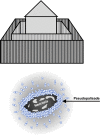A Review of Newly Diagnosed Glioblastoma
- PMID: 33614476
- PMCID: PMC7892469
- DOI: 10.3389/fonc.2020.574012
A Review of Newly Diagnosed Glioblastoma
Abstract
Glioblastoma is an aggressive and inevitably recurrent primary intra-axial brain tumor with a dismal prognosis. The current mainstay of treatment involves maximally safe surgical resection followed by radiotherapy over a 6-week period with concomitant temozolomide chemotherapy followed by temozolomide maintenance. This review provides a summary of the epidemiological, clinical, histologic and genetic characteristics of newly diagnosed disease as well as the current standard of care and potential future therapeutic prospects.
Keywords: brain tumors; cancer; glioblastoma; high-grade gliomas; radiation therapy.
Copyright © 2021 Oronsky, Reid, Oronsky, Sandhu and Knox.
Conflict of interest statement
Author BO is employed by the company EpicentRx. AO is currently employed by InterWest Partners. The remaining authors declare that the research was conducted in the absence of any commercial or financial relationships that could be construed as a potential conflict of interest.
Figures



References
-
- Konecne SM. Central nervous system neoplasms. In: Goodman C, Boissonnault W, editors. Pathology: Implications for the Physical Therapist. Philadelphia, Pa: WB Saunders Co; (1998). p. 702–22.
Publication types
LinkOut - more resources
Full Text Sources
Other Literature Sources

